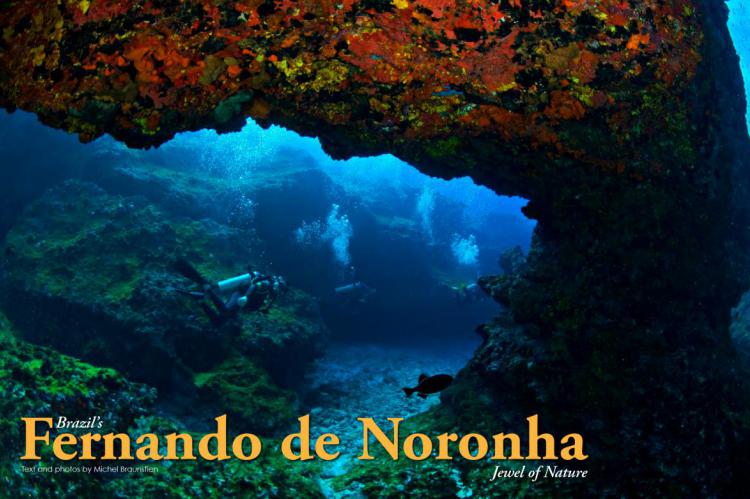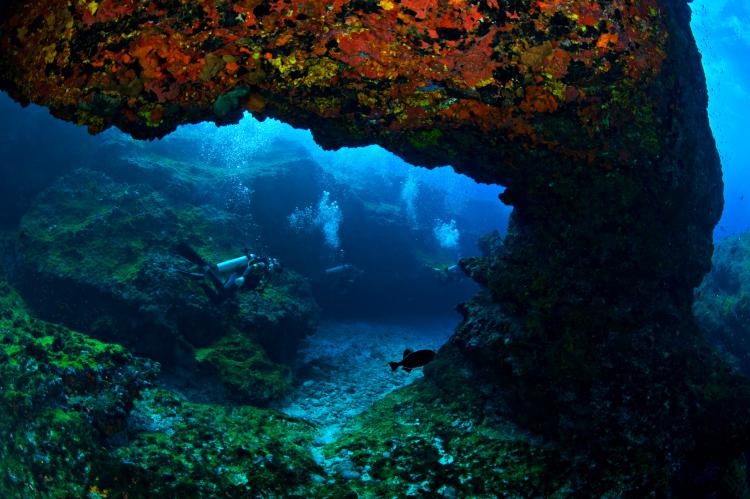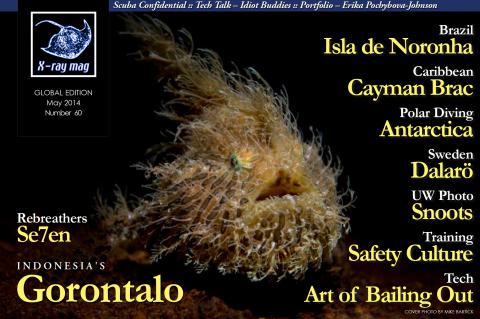Fernando de Noronha
If I were to tell you about a special place where no one locks their doors at night, where crime is virtually nonexistent, where the number of tourists is intentionally restricted to preserve the ecological balance, and where each visitor must pay a daily fee of 15 Euros (approximately US$20) to protect the environment, would you think about Brazil? Probably not!
History
Discovered in 1503 by the Portuguese, the archipelago was named after Fernao de Loronha who received it as a gift in 1504 from his friend, King Manoel I of Portugal. However, Loronha quickly forgot this gift and never saw it at all. Ruled by England, then France, and then by the Netherlands, the archipelago came again under the yoke of Portugal in 1737. Mainly a prison colony, it was used by the U.S. forces as a military base during World War II and again in the late 50′s and early 60′s during the cold war against Soviet Union. Since 1988, the islands have been open to tourism, 85 percent of which being of Brazilian origin. Over two thirds of the archipelago’s total land surface is a marine national park, classified since 2002 as part of the UNESCO world heritage.Hotels and transportation
There are no hotels on this preserved site but there are living units, or pousadas, in private homes. Infrastructure is very basic. A single seven-kilometer paved road crosses the inhabited island. Buggies are commonly used as a means of transportation and allow driving outside the main axis.Nature and conservation
The site’s nature conservation is exceptional; it has a rich and varied flora and fauna. Non-governmental protection agencies for the study of various species are quite active on the island and entail projects such as the Projeto Golfinho Rotador for the dolphins, the Tamar Project for the turtles, and other projects pertaining to the study of sharks, birds and crustaceans. Some environmental mistakes made long ago by the Portuguese can still be noticed today. For example, two different lizard species were introduced to eat rats but preferred eggs, chicks and turtles that have just hatched; unfortunately, it is now too late to reverse the process.Beaches
At sunset, whilst visiting Baia dos porcos, you can admire, the Dois Irmaos, the two renowned tiny sister islands. Morro do Pico, an impressive peak rock, is another one of the local spots. Play online games at the best friv 2 games this friv games website. The main island is surrounded by 16 heavenly beaches that are clean and almost deserted, making it almost impossible not to stop and have a look. Baia do Sancho is without a doubt the most sumptuous beach and is rated first in the Brazilian beach ratings. The water is crystal clear and the shoreline is bordered by dense vegetation. This is an ideal place for snorkeling. You can often see stingrays, turtles, as well as other species. Nevertheless, access to the beach is rather difficult, involving a hike down a steep cliff, 50 meters (164 feet) high, if you wish to swim. Two ladders allow crossing of a narrow opening between the rocks, followed by a large flight of stairs that leads to the beach. This is not easy, but it is well worth the effort for both the experience and the view. (...)Download the full article ⬇︎

Originally published
X-Ray Mag #60
Indonesia's Gorontalo; Cayman Brac; Antarctica; Brazil's Fernando de Noronha; New Dalarö wreck park in the works in Sweden; Reviewing Poseidon's SE7EN rebreather; The art of bailing out; Idiot buddies; Safety culture; Scuba Confidential; Sensational snoots; Overview of photo editing software; Seacam Academy; Florida's artificial reefs; Erika Pochybova-Johnson portfolio; Plus news and discoveries, equipment and training news, books and media, underwater photo and video equipment, shark tales, whale tales and much more...






























